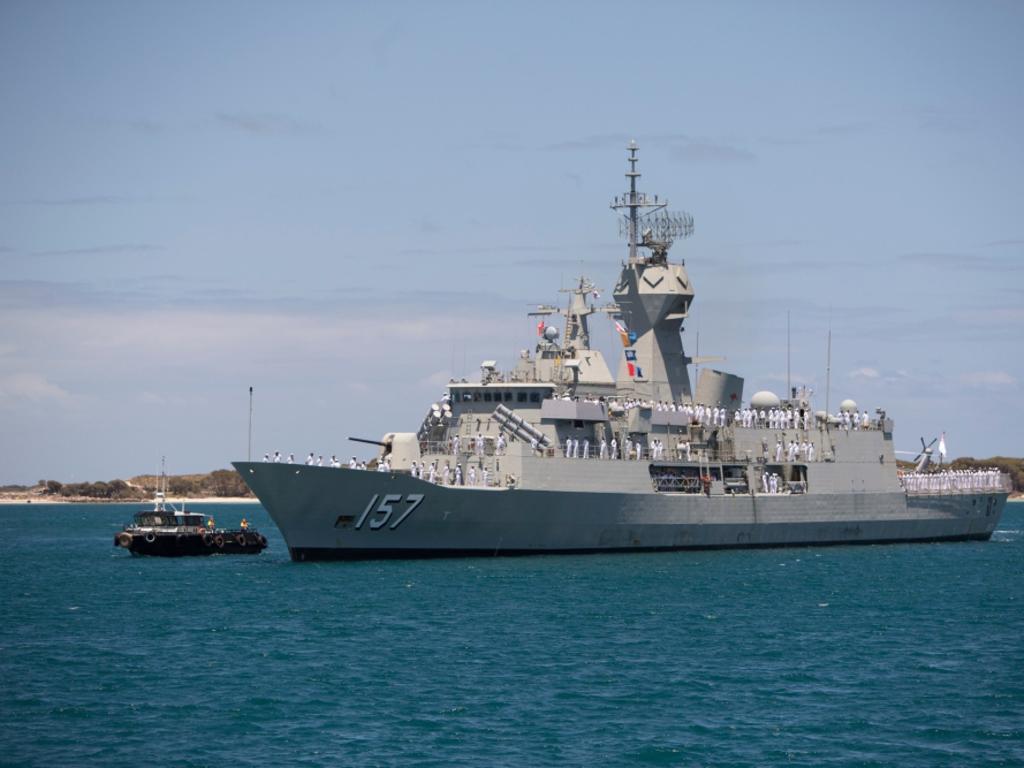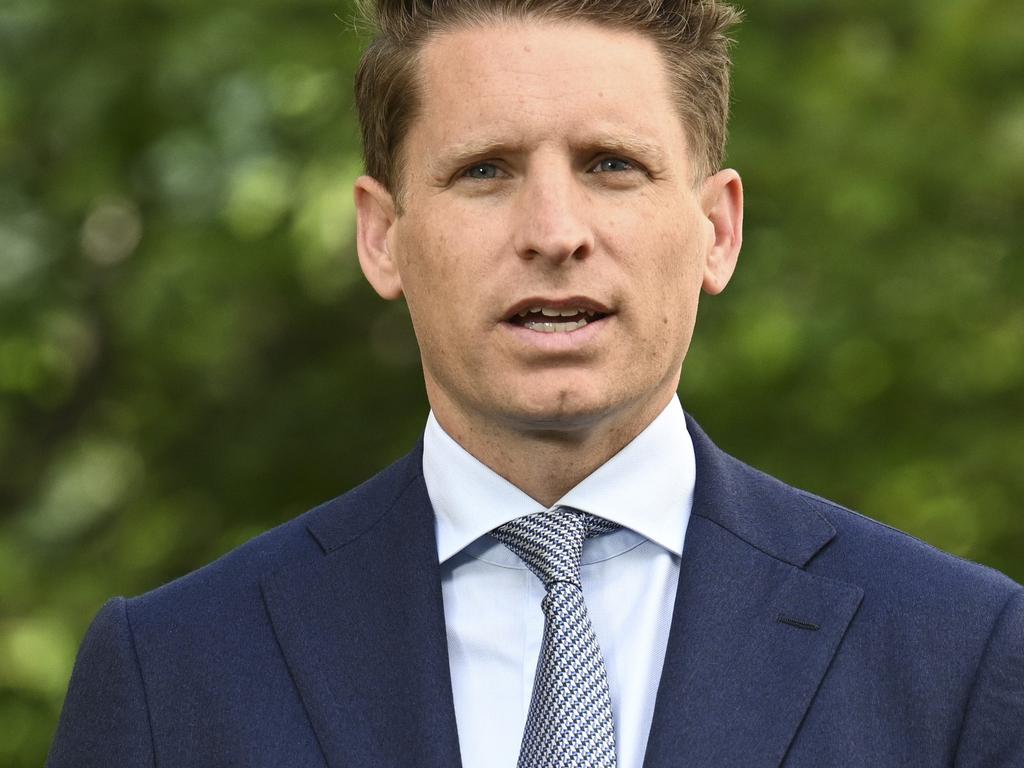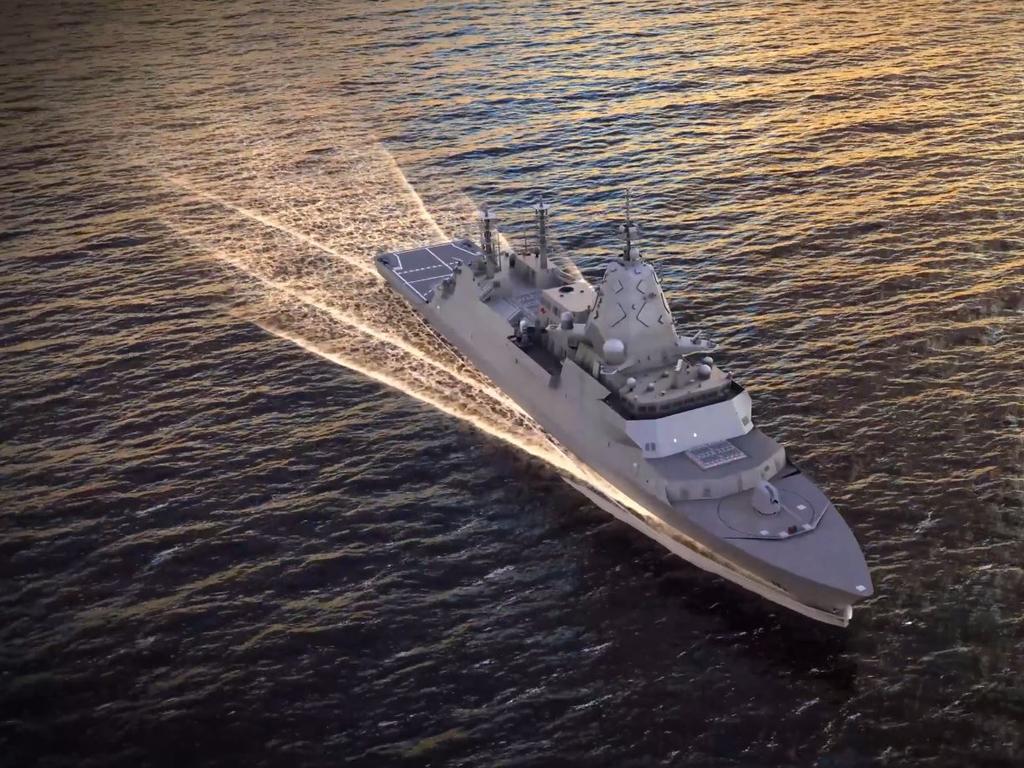Navy ship review shakeup will boost firepower but is laced with risk

Because of the mothballing of two ageing Anzac frigates, one now and one in 2026, it will not be until the early 2030s that the navy’s size will grow larger than it is today. And it will not be until the mid to late 2030s that Australia finally gets a significant boost in firepower and warships.
The reality is that the government’s planned overhaul of the navy – as ambitious as it is, with its long-term plan for more ships, missiles and lethality – is a long-term plan rather than an instant solution for the here and now.
That is the sad result of more than a decade of neglect of the navy – you can’t just click fingers and produce a lethal navy from an underfunded one with one Defence document, a press conference and a promise of more money.
But at least it is a start. If this ambitious plan were actually to be implemented and paid for in full – a rarity in Defence – then the navy would in 15 years’ time start to resemble the sort of well-armed force Australia deserves in these troubled times.
The plan foreshadows an eventual rise in the number of major surface combatants from 11 to 20 in addition to an experimental semi-autonomous fleet of six large vessels, each with 32 missile cells.
It will be backed in the short term with a belated but important defence funding increase of $1.7bn over the forward estimates, and $11.1bn over the next decade, to lift defence spending as a proportion of GDP to 2.4 per cent from just over 2 per cent.
The plan contains a lot of good reforms, but also a lot of risk.
Firstly, the good news is the centrepiece plan to fast-track acquisition of 11 general purpose frigates to be chosen from four proven overseas designs. These are urgently needed, both to replace the fast-ageing Anzac frigates and also to give the navy greater options, greater firepower and greater presence at sea at any one time.
The government says it will fast-track this process, allowing the first three ships to be largely built overseas and the rest in Western Australia. But, critically, it has stipulated that the ships will be off-the-shelf; in other words, they will not be tinkered with or “Australianised”. This is good news because it greatly increases the chance of acquiring them on time and on budget. The risk is that we still have to go through yet another selection competition between four bidders, a process that must not be allowed to slow down the acquisition.
The second piece of good news is that the troubled Hunter-class anti-submarine frigates will be cut from nine ships to six. The Hunter project has been plagued by design and weight problems and they are considered too lightly armed for the era of a rising China.
The decision to cut three ships reflects the fact the review found the cost of the program had ballooned to $65bn for all nine ships.
Having already sunk more than $4bn into the program, the government decided, perhaps reluctantly, to retain it. But a reduction in the project size will also increase the cost per ship, meaning the remaining six frigates will almost certainly be the most expensive on the planet.
The highest-risk part of this naval plan is the surprise inclusion of six semi-autonomous so-called large optionally crewed surface vessels, each armed with 32 missile cells. The floating drone-like capability is attractive in theory because it gives firepower without large crews. It may prove to be an inspired choice. But for now it is, at best, a highly experimental concept that could take much longer to develop and build than planned.

The government claims the overall plan can be achieved with minimal increases in crew numbers because of better automation. This is good news if true, but the navy faces a generational shortage of personnel and the government will need to complement these reforms with a more effective long-term recruitment strategy.
The plan also envisages continuous naval shipbuilding in both South Australia and Western Australia. This has been promised before in South Australia but changing plans always derail the concept.
This continuous shipbuilding plan will only work if this and subsequent governments stop changing course every few years.
The other major risk – as always – is political will. Large Defence announcements such as this are too often followed up by slow implementation and, ultimately, budget cuts.
The government’s slow response to the dire strategic warnings contained in last year’s defence review did not inspire confidence, nor did the refusal in last year’s budget to increase Defence spending in any significant form.
The pressure will be on the government to prove the doubters wrong and actually fast-track this major shake-up to get more and better-armed ships into the water as quickly as possible, even if it is not tomorrow. The clock is ticking.







Let’s hope Australia doesn’t get into a naval conflict with China this decade, because the navy’s capability will fall before it increases under the government’s major overhaul of the surface fleet.